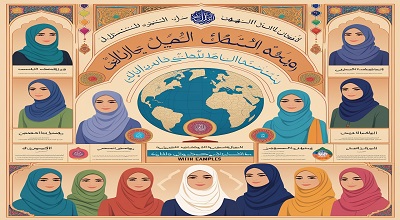Features and Quality of Education in Muslim Countries
Features and Quality of Education in Muslim Countries: Education in Muslim-majority countries has undergone significant transformations over the years. While some nations have excelled in integrating modern and Islamic education, others face challenges related to accessibility, quality, and gender equality. This article explores the features and quality of education in Muslim countries, providing the latest examples, statistics, and trends.
Historical Context of Education in Muslim Countries
Islamic civilization has a rich educational heritage, with early institutions like Al-Qarawiyyin University (859 AD) in Morocco and Al-Azhar University (970 AD) in Egypt serving as centers of knowledge. The Golden Age of Islam (8th-14th century) saw advancements in science, medicine, and philosophy. However, colonial rule disrupted traditional systems, leading to a mix of Western and Islamic education models post-independence.
Key Features of Education in Muslim Countries
A. Religious and Secular Education Integration
Many Muslim countries blend Islamic studies with modern curricula. Examples:
- Saudi Arabia: Islamic theology is mandatory in public schools.
- Malaysia: National curriculum includes Islamic studies for Muslim students.
B. Government Policies and Reforms
- UAE: Introduced “Education 2020” strategy focusing on innovation.
- Turkey: Reformed its education system to align with EU standards.
C. Gender Disparities and Progress
- Saudi Arabia: Lifted the ban on women driving and increased female university enrollment.
- Pakistan: Malala Yousafzai’s advocacy improved girls’ education access.
D. Technological Advancements in Education
- Qatar: Uses AI and smart classrooms in education.
- Malaysia: E-learning platforms like “Frog VLE” enhance digital learning.
E. International Collaborations and Exchanges
- Saudi Arabia: Scholarships for students to study abroad (e.g., King Abdullah Scholarship Program).
- UAE: Hosts branch campuses of NYU and Sorbonne University.
Quality of Education in Muslim Countries
A. Literacy Rates and Enrollment Statistics
- Highest Literacy Rates: Kazakhstan (99.8%), Turkmenistan (99.7%).
- Lowest Literacy Rates: Afghanistan (43%), Niger (30%).
B. Higher Education and Research Contributions
- Malaysia: Ranked among top 50 in QS World University Rankings (Universiti Malaya).
- Saudi Arabia: KAUST (King Abdullah University of Science and Technology) is a leading research hub.
C. Challenges in Education Quality
- Underfunding: Public schools in Pakistan and Egypt lack resources.
- Outdated Curricula: Some countries still rely on rote learning.
D. Success Stories and Improvements
- Indonesia: Increased primary school enrollment to 94%.
- Bangladesh: Reduced gender gap in education.
Case Studies of Education Systems in Muslim Countries
A. Malaysia
- Features: Dual system (public & Islamic schools).
- Quality: High PISA scores, strong STEM focus.
B. Turkey
- Features: Secular education with optional Islamic courses.
- Quality: Over 200 universities, including top-ranked Koç University.
C. Saudi Arabia
- Features: Religious education dominant but modernizing.
- Quality: High investment in higher education (KAUST, KFUPM).
D. Indonesia
- Features: Largest Islamic education system (Pesantren schools).
- Quality: Improving but rural areas lag behind.
E. UAE
- Features: International schools, focus on innovation.
- Quality: Ranked 1st in Arab world for higher education.
F. Pakistan
- Features: Public-private divide, madrasas alongside modern schools.
- Quality: Low literacy (59%), but elite universities like LUMS excel.
G. Egypt
- Features: Free public education, overcrowded classrooms.
- Quality: Al-Azhar University remains prestigious.
Comparative Analysis with Global Standards
While countries like Malaysia and UAE compete globally, others struggle with outdated systems. PISA and TIMSS rankings show mixed results, with Gulf nations improving but African Muslim countries lagging.
Future Prospects and Recommendations
- Increase funding for public education.
- Enhance teacher training programs.
- Promote STEM and digital literacy.
- Encourage public-private partnerships.
Conclusion
Education in Muslim countries is diverse, with some nations leading in innovation while others face systemic challenges. Continued reforms and investments are crucial for improving quality and accessibility.
FAQs
Q1: Which Muslim country has the best education system?
A: The UAE and Malaysia are among the top due to high investment and international collaborations.
Q2: How does Islamic education integrate with modern curricula?
A: Countries like Malaysia and Indonesia offer both religious and secular subjects in schools.
Q3: What are the biggest challenges in Muslim education systems?
A: Underfunding, gender disparities, and outdated teaching methods.
Q4: Are literacy rates improving in Muslim countries?
A: Yes, but progress is uneven (e.g., Gulf nations improve faster than Sub-Saharan Africa).
Q5: How do Muslim countries perform in global rankings?
A: Some (Malaysia, UAE) rank well, while others (Pakistan, Afghanistan) struggle due to instability.
Free Download Link: Blue Kik APK
